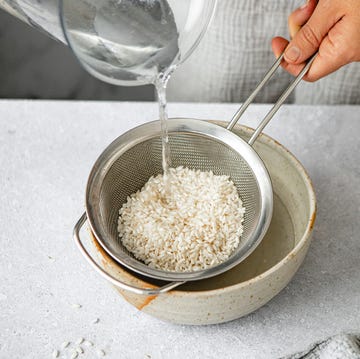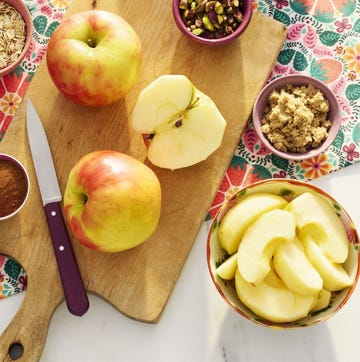Cooking with animal fat like beef tallow, duck fat, and pork lard has been popular for decades among home chefs and pro cooks alike. The interest has been sizzling more recently, which might have you wondering what is beef tallow exactly?
Think of beef tallow as liquid gold: a byproduct of animal fat that adds so much flavor to your food. Through the 1990s and early 2000s, beef tallow was typically used for frying French fries and other fried foods in restaurants (including McDonald's!). It’s prized for its high smoke point and rich flavor, which makes it great for searing and sautéing, too.
Ahead, learn more about this beefy ingredient including how to cook with it in your home kitchen and if it's actually a healthy alternative to certain cooking oils.
What Is Beef Tallow?
Beef tallow is the fat that of cow organs that has been rendered (meaning melted), strained, and cooled. When used for cooking and baking, beef tallow acts a bit like butter; it has a similar saturated fat content, but the higher smoke point makes it even more versatile. Its smoke point is around 400°F, which makes it a great alternative to other cooking oils including coconut oil and olive oil, both of which have a lower smoke point.
While some people think that beef tallow is healthier for you than traditional seed oils like canola oil, health experts have debunked that theory. Because of its high saturated fat content, the American Heart Association recommends limiting your tallow consumption as part of a heart-healthy diet. Still, it's a fantastic ingredient to use to level up your cooking.
Beyond cooking, beef tallow has been used in skincare products due to its anti-inflammatory and moisturizing properties, as well handcrafted goods like candles and bar soap. While you can easily make your own beef tallow at home, you can also buy it from the butcher, specialty cooking stores, and even some big box retailers. Look for high-quality, grass-fed beef tallow for the best tasting product.
Is Beef Tallow Just Grease?
Not exactly. For starters, tallow is specifically a byproduct of beef or mutton, whereas grease can be a result of cooking a variety of different types of meat. Plus, beef tallow is typically strained to remove any impurities, leaving you with a cleaner, clearer tasting product. Grease often comes from cooking meat like hamburgers or steak in a pan, which means that it will include the remains of whatever other cooking fat you used (oil or butter), plus seasoning.
Is Beef Tallow the Same as Lard?
No. The main difference between tallow and lard is that tallow is a byproduct of beef, whereas lard is pork fat. While both can be used for baking (think: pie crust and pastry dough), lard tends to be the better choice due to its milder flavor. It has a similar fat content and flavor profile to vegetable shortening that makes it a prized ingredient among bakers.













